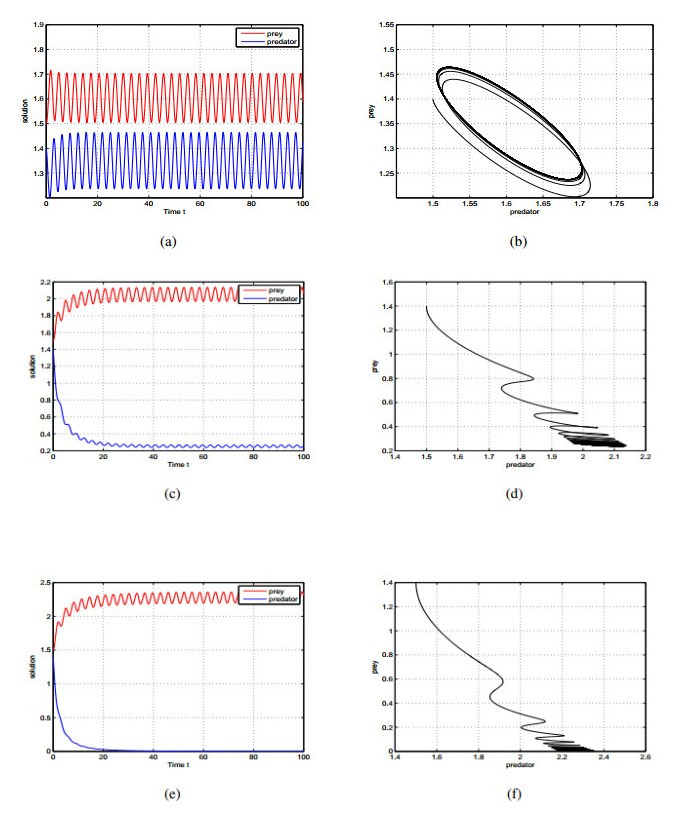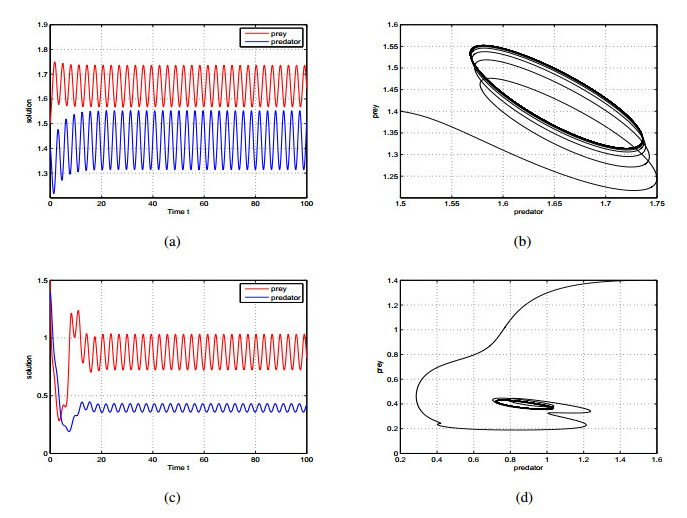1.
Introduction
Stability problem of a functional equation was first posed in [31] which was answered in [7] and then generalized in [1,28] for additive mappings and linear mappings respectively. Since then several stability problems for various functional equations have been investigated in [9,10,12,23]. Fuzzy version was discussed in [13,14]. Recently, the stability problem for Jensen functional equation and cubic functional equation were considered in [15,20] respectively in intuitionistic fuzzy normed spaces; while the idea of intuitionistic fuzzy normed space was introduced in [30] and further studied in [16,17,18,19,21,22,24,25,26,27,29] to deal with some summability problems. Several results for the Hyers-Ulam stability of many functional equations have been proved by several researchers [4,5,6,8,11,23]
In modeling applied problems only partial information may be known (or) there may be a degree of uncertainty in the parameters used in the model or some measurments may be imprecise. Due to such features, many authors have considered the study of functional equations in the fuzzy setting. Jun et al. introduced the following functional equations
and
and investigated its general solution and the Hyers-Ulam stability respectively. The functional equations (1.1) and (1.2) are called cubic functional equations because the function f(x)=cx3 is a solution of the above functional equations (1.1) and (1.2).
Rassias introduced the following new cubic equation f:X→Y satisfying the cubic functional equation
for all x,y∈X, with X a linear space, Y a real complete linear space, and then solved the Hyers-Ulam stability problem for the above functional equation.
In this paper, we define and find the general solution of the 3-D cubic functional equation
We also prove the Hyers-Ulam stability of this functional equation in fuzzy normed spaces by using the direct method and the fixed point method.
2.
Preliminaries
Definition 2.1. Let X be a real linear space. A function N:X×R→ [0,1] is said to be a fuzzy norm on X if for all x,y∈X and a,b∈R,
(N1)N(x,c)=0 forc≤0;
(N2)x=0 if and only if N(x,c)=1 for all c>0;
(N3)N(cx,b)=N(x,b|c|)ifc≠0;
(N4)N(x+y,a+b)≥min{N(x,a),N(y,b)};
(N5)N(x,⋅) is a non-decreasing function on R and limb→∞N(x,b)=1;
(N6)for x≠0,N(x,⋅) is (upper semi) continuous on R.
The pair (X,N) is called a fuzzy normed linear space. One may regard N(x,b) as the truth value of the statement the norm of x is less than or equal to the real number b.
Definition 2.2. Let (X,N) be a fuzzy normed linear space. Let {xn} be a sequence in X. Then xn is said to be convergent if there exists x∈X such that limn→∞N(xn−x,b)=1 for all b>0. In that case, x is called the limit of the sequence {xn} and we denote it by N−limn→∞xn=x.
Definition 2.3. A sequence {xn} in X is called Cauchy if for each ϵ>0 and each b>0 there exists n0 such that for all n≥n0 and all p>0, we have N(xn+p−xn,b)>1−ϵ.
Every convergent sequence in a fuzzy normed space is Cauchy.
Definition 2.4. If each Cauchy sequence is convergent, then the fuzzy norm is said to be complete and the fuzzy normed space is called a fuzzy Banach space.
Definition 2.5. A mapping f:X→Y between fuzzy normed spaces X and Y is continuous at a point x0 if for each sequence {xn} converging to x0 in X, the sequence {f(xn)} converges to f(x0). If f is continuous at each point of x0∈X, then f is said to be continuous on X.
We bring the following theorems which some results in fixed point theory. These results play a fundamental role to arrive our purpose of this paper.
Theorem 2.6. (Banach Contraction Principle) Let (X,d) be a complete metric space and consider a mapping T:X→X which is strictly contractive mapping, that is,
(A1) if d(Tx,Ty)≤Ld(x,y) for some (Lipschitz constant) L<1, then
1) the mapping T has one and only fixed point x∗=T(x∗);
2) the fixed point for each given element x∗ is globally attractive, that is,
(A2) limn→∞Tnx=x∗ for any starting point x∈X;
1) One has the following estimation inequalities:
(A3) d(Tnx,x∗)≤11−Ld(Tnx,Tn+1x) for all n≥0,x∈X,
(A4) d(x,x∗)≤11−Ld(x,x∗),∀x∈X.
Theorem 2.7. (The Alternative of fixed point) For a complete generalized metric space (X,d) and a strictly contractive mapping T:X→X with Lipschitz constant L, and for each given element x∈X, either
(B1) d(Tnx,Tn+1x)=+∞, for all n≥0, or
(B2) There exists a natural number n0 such that
i) d(Tnx,Tn+1x)<∞ for all n≥n0;
ii) the sequence (Tnx) is convergent to a fixed point y∗ of T;
iii) y∗ is the unique fixed point of T in the set Y={y∈X;d(Tn0x,y)<∞};
iv) d(y∗,y)≤11−Ld(y,Ty) for all y∈Y.
3.
General solution of the functional equation (1.4)
In this section, we discuss the general solution of the functional equation (1.4).
Theorem 3.1. If an odd mapping f:X→Y satisfies the functional equation
for all x,y∈X if and only if f:X→Y satisfies the functional equation
for all x1,x2,x3∈X.
Proof. Let f:X→Y satisfy the functional equation (3.1). Setting (x,y)=(0,0) in (3.1), we get f(0)=0. Replacing (x,y) by (x,0), (x,x) and (x,2x) respectively in (3.1), we obtain
for all x∈X. In general for any positive integer a, we have
for all x∈X. It follows from (3.4) that
for all x∈X. Replacing (x,y) by (x1,x2+x3) in (3.1), we get
for all x1,x2,x3∈X. Again replacing (x,y) by (x2+x3,−2x1) in (3.1), we get
for all x1,x2,x3∈X. Substituting (3.7) in (3.6), we get
for all x1,x2,x3∈X. Setting (x,y) by (x2,2x1) in (3.1). we obtain
for all x1,x2∈X. Switching (x,y) by (x3,2x1) in (3.1), we obtain
for all x1,x3∈X. Adding (3.9) and (3.10), we get
for all x1,x2,x3∈X. Adding (3.8) and (3.11), we get
for all x1,x2,x3∈X. Replacing (x,y) by (−x1,x2) in (3.1), we obtain
for all x1,x2∈X. Switching (x,y) by (−x1,x3) in (3.1), we have
for all x1,x3∈X. Adding (3.14) and (3.15), we obtain
for all x1,x2,x3∈X. Substituting (3.16) in (3.12), we have
for all x1,x2,x3∈X.
Conversely, let f:X→Y satisfy the functional equation (3.2). Replacing (x1,x2,x3) by (x,0,0), (0,x,0) and (0,0,x) respectively in (3.17), we get
One can easy to verify from (3.18) that, replacing (x1,x2,x3) by (x,y,0) in (3.2), we have
for all x,y∈X. Again replacing (x1,x2,x3) by (x,0,−y) in (3.2), we obtain
for all x,y∈X. Adding the equations (3.19) and (3.20), we get our result.
Throughout the upcoming sections, assume that X, (Z,N′) and (Y,N) are linear space, fuzzy normed space and fuzzy Banach space, respectively. Let us denote
4.
Stability results for the functional equation (1.4): Direct method
In this section, we investigate the Hyers-Ulam stability of the functional equation (1.4) in fuzzy normed space via direct method.
Theorem 4.1. Let ω∈{−1,1} be fixed and Γ:X3→Z be a mapping such that for some ρ>0 with (ρ23)ω<1
for all x∈X and all ε>0 and
for all x1,x2,x3∈X and all ε>0. Suppose an odd mapping f:X→Y satisfies the inequality
for all ε>0 and all x1,x2,x3∈X. Then the limit
exists for all x∈X and the mapping C:X→Y is a unique cubic mapping such that
for all x∈X and all ε>0.
Proof. First assume ω=1. Replacing (x1,x2,x3) by (x,0,0) in (4.2), we get
for all x∈X and all ε>0. From (4.4), we have
for all x∈X and all ε>0. Replacing x by 2nx in (4.5), we obtain
for all x∈X and ε>0. Using (4.1), (N3) in (4.6) we get
for all x∈X and all ε>0. It is easy to verify from (4.7), that
holds for all x∈X and all ε>0. Replacing ε by ρnε in (4.8), we get
for all x∈X and all ε>0. It is easy to see that
for all x∈X. From (4.9) and (4.10), we have
for all x∈X and all ε>0. Replacing x by 2mx in (4.11) and using (4.1), (N3), we get
and so
for all x∈X, ε>0 and all m,n≥0. Replacing ε by ε∑n+m−1i=mρi3(23(i+1)) in (4.12), we get
for all x∈X, ε>0 and all m,n≥0. Since 0<ρ<23 and ∑ni=0(ρ23)i<∞, the Cauchy criterion for convergence and (N5) imply that {f(2nx)23n} is a Cauchy sequence in (Y,N). Since (Y,N) is complete, this sequence converges to some point C(x)∈Y. So one can define the mapping C:X→Y by
for all x∈X. Since f is odd, C is odd. Letting m=0 in (4.13), we obtain
for all x∈X and all ε>0. Taking the limit as n→∞ in (4.14) and using (N6), we get
for all x∈X and all ε>0. Now we claim that C is cubic. Replacing (x1,x2,x3) by (2nx1,2nx2,2nx3) in (4.2) respectively, we have
for all x∈X and all ε>0. Since
A satisfies the functional equation (1.4). Hence C:X→Y is cubic. To prove the uniqueness of C, let D:X→Y be another cubic mapping satisfying (4.3). Fix x∈X. Clearly, C(2nx)=23nC(x) and D(2nx)=23nD(x) for all x∈X and all n∈N. It follows from (4.3) that
for all x∈X and all ε>0. Since limn→∞3(2n)ε(23−ρ)2ρn=∞, we have
Thus N(C(x)−D(x),ε)=1 for all x∈X and all ε>0, and so C(x)=D(x).
For ω=−1, we can prove the result by a similar method. This completes the proof of the theorem.
The following corollary is an immediate consequence of Theorem 4.1, concerning the stability for the functional equation (1.4).
Corollary 4.2. Suppose that the mapping f:X→Y satisfies the inequality
for all x1,x2,x3∈X and all ε>0, where θ, s are constants with θ>0. Then there exists a unique cubic mapping C:X→Y such that
for all x∈X and all r>0.
5.
Stability results for the functional equation (1.4): Fixed point method
In this section, we establish the Hyers-Ulam stability of the functional equation (1.4) in fuzzy normed space via fixed point method.
To prove the stability result, we define the following: ηi is a constant such that
and Ω is the set such that Ω={t:X→Y,t(0)=0}.
Theorem 5.1. Let f:X→Y be a mapping for which there exists a mapping Γ:X3→Z with condition
for all x1,x2,x3∈X and all ε>0 and satisfying the inequality
for all x1,x2,x3∈X and ε>0. If there exists L=L[i] such that the function x→β(x)=13Γ(x2,0,0) has the property
for all x∈X and ε>0, then there exists a unique cubic function C:X→Y satisfying the functional equation (1.4) and
for all x∈X and ε>0.
Proof. Set
for all x1,x2,x3∈X. Then
Thus (5.1) holds. But we have
has the property
for all x∈X and ε>0. Hence
Thus
Now we can decide the Lipschitz constant 0<L<1 by ηi, given in the previous statement of Theorem 5.1. So we divide into the following 6 cases for the conditions of ηi as follows:
Case (ⅰ): L=2−3fors=0ifi=0:
N(f(x)−C(x),ε)≥N′(L1−i1−Lβ(x),ε)≥N′(θ(2−3)1−2−3,3ε)≥N′(θ,21ε).
Case (ⅱ): L=23fors=0ifi=1:
N(f(x)−C(x),ε)≥N′(L1−i1−Lβ(x),ε)≥N′(θ1−2,3ε)≥N′(θ,−21ε).
Case (ⅲ): L=2s−3fors<3ifi=0:
Case (ⅳ): L=23−sfors>3ifi=1:
Case (ⅴ): L=2ns−3fors<3nifi=0:
Case (ⅵ): L=23−nsfors<3nifi=1:
Hence the proof is completed.
The following corollary is an immediate consequence of Theorem 5.1, concerning the stability of the functional equation (1.4).
Corollary 5.2. Suppose a function f:X→Y satisfies the inequality
for all x1,x2,x3∈X and ε>0, where θ,s are constants with θ>0. Then there exists a unique cubic mapping C:X→Y such that
for all x∈X and ε>0.
Remark 5.3. To prove the stability of functional equations and functional inequalities, we have two methods: direct method and fixed point method. For the direct method, we use the Hyers-Ulam method, which is a traditional method, and for the fixed point method, we use the Isac-Rassias method, which is a more recent method. The proofs for the stability of functional equations and functional inequalities are similar to the orginal direct method and/or the fixed point method.
In general, to prove the stability, we divide two cases, for an example, p>3 and 0<p<3 in ‖x‖p, appeared in a control function of cubic functional equations. In this paper, we just use one control function to prove the stability of a new 3-D cubic functional equation by using the direct method and by using the fixed point method.
6.
Conclusion
We have introduced the following 3-D cubic functional equation
We have solved the 3-D cubic functional equation and we have proved the Hyers-Ulam stability of the 3-D functional equation in fuzzy normed spaces by using the direct method and the fixed point method.
Acknowledgments
C. Park was supported by Basic Science Research Program through the National Research Foundation of Korea funded by the Ministry of Education, Science and Technology (NRF -2017R1D1A1B04032937).
Conflict of interest
The authors declare that they have no competing interests.















 DownLoad:
DownLoad: